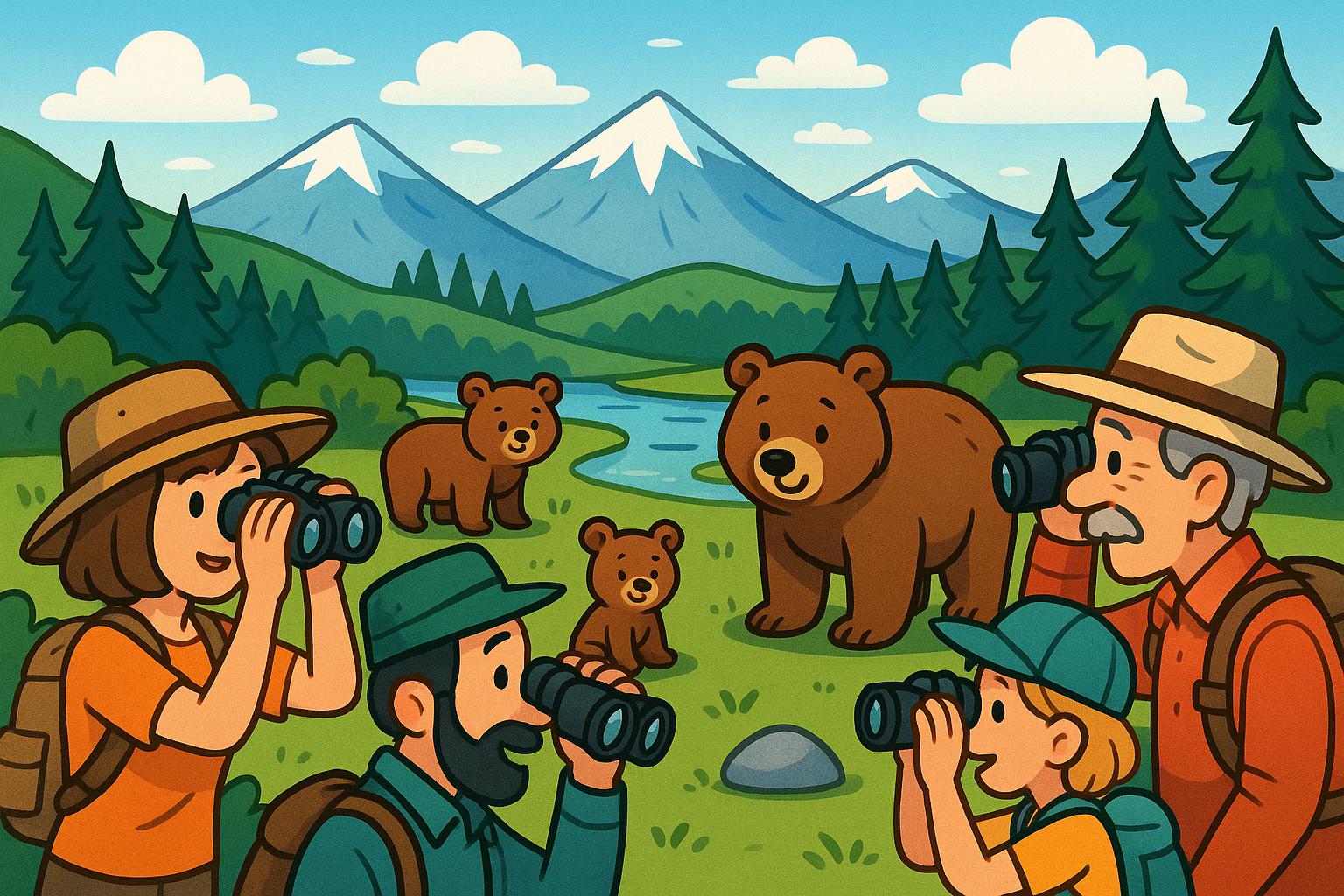Bearing Witness to Nature
Seeing bears in their natural habitat can be a remarkable and awe-inspiring experience. These powerful creatures roam across various regions, each offering unique opportunities for observation. When planning a trip to see bears, it is crucial to consider the best locations, season, and ethical guidelines to ensure a respectful and safe encounter.
Prime Bear Viewing Regions
Alaska, USA
Alaska stands out as one of the premier destinations to encounter bears. Denali National Park and Nature Preserve offers vast wilderness areas where brown bears can be seen amid breathtaking landscapes. Similarly, Katmai National Park is famous for its salmon-fed brown bears. Brooks Falls is a popular spot where bears gather, especially during July and September when salmon runs peak.
British Columbia, Canada
The Great Bear Rainforest in British Columbia provides an outstanding environment for viewing the Kermode bear, or “spirit bear,” a rare subspecies of the American black bear. Guided tours often focus on minimizing impact while maximizing opportunities for observation.
European Encounters
In Scandinavia, places like Finland and Sweden offer travelers opportunities to see European brown bears in their natural settings. There are dedicated bear-watching areas and specially designed hides for visitors to stay overnight and enjoy the diverse wildlife experience.
Bear-Watching Ethics
It is fundamental to observe bears responsibly. Keep a respectful distance to avoid stressing the animals, and never feed them, as this can encourage dependency. Many protected areas offer guided tours that ensure both safety and minimal environmental impact.
Additional Resources
For further information on bear-watching destinations, ethical guidelines, and conservation efforts, the World Wildlife Fund provides valuable resources. You can also explore National Geographic for more in-depth wildlife insights.
By choosing locations thoughtfully and adhering to ethical practices, one can appreciate the beauty and majesty of bears in the wild while promoting their conservation for future generations.

